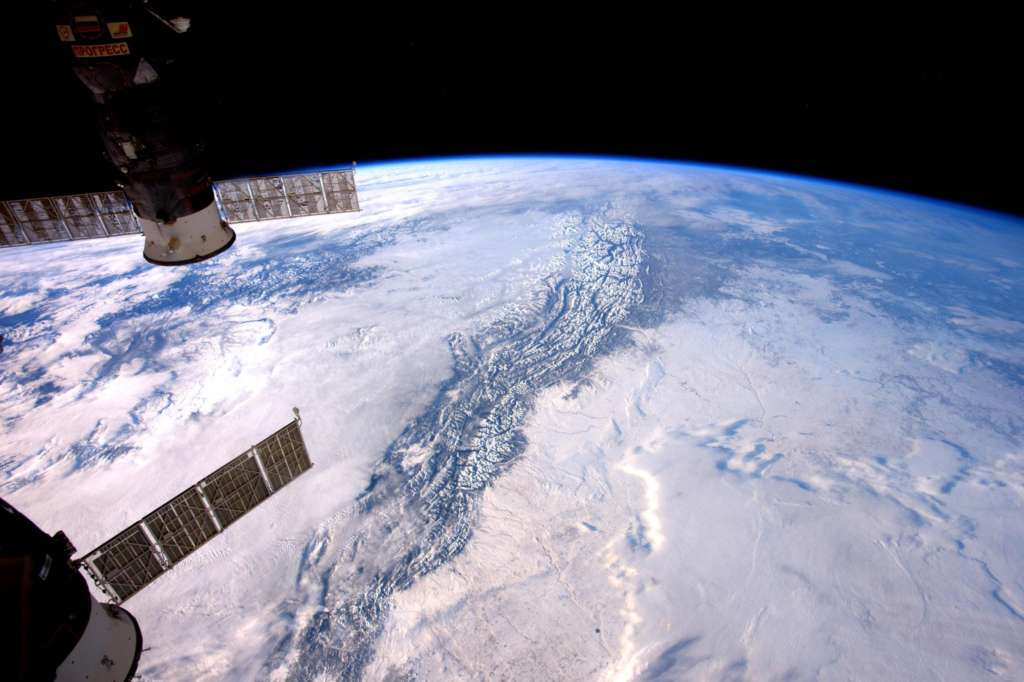Among the memorabilia in Air Force Chief of Staff Gen. David Goldfein’s office is a fragment of the Wright brothers’ first airplane. But the most intriguing items may be two small plastic satellites on sticks that can be maneuvered to simulate a dogfight in space.
Space is now a potential battle zone, Goldfein explains in an interview. The Air Force wants to ensure “space superiority,” which he says means “freedom from attack and freedom to maneuver.”
If you think cyberwar raises some tricky issues, get your mind around this next big threat worrying the Pentagon. Similar problems exist in both the cyber and space domains: U.S. commercial and military interests are interwoven but deeply suspicious of each other; the technologies are borderless but are being weaponized by hostile nation-states; and attacks on satellites and other systems may be invisible and difficult to attribute.
Today’s digital world hangs on the satellite networks that invisibly circle the globe. They’re the wiring system for many commercial and military operations down below, and they’re highly vulnerable to attack. Russia has jammed GPS reception in Ukraine; China has hacked U.S. weather satellites; North Korea has jammed signals over the demilitarized zone.
The cloud overhead is thickening: As of mid-2016, the Union of Concerned Scientists counted 1,419 satellites orbiting the globe, including 576 from the United States, 181 from China and 140 from Russia. More than half are in low Earth orbit; most of the rest are geostationary, about 22,000 miles from Earth. Roughly 350 satellites, or 25 percent of the total, are for military use. At least 12 nations now have space-launch capability.
Space warfare has been a staple of science fiction for decades, but real-world fears were checked by a 1967 Outer Space Treaty, which banned the use of nuclear weapons there. But the treaty didn’t ban the use of conventional weapons in space, and Russia began its first anti-satellite weapons program in 1961, according to leading expert Brian Weeden of the Secure World Foundation. After the Cold War ended, fears eased about space conflict.
A wake-up call came with China’s 2007 test of an anti-satellite missile that destroyed a Chinese target in space (creating more than 3,000 dangerous fragments). The Chinese have now conducted a total of eight tests of satellite-killer rockets, Weeden says. Russia, too, has resumed similar tests. The United States is also thought to have what amount to anti-satellite rockets in the “midcourse” leg of its missile-defense system.
Rocket attacks against satellites worry the Pentagon less these days than electronic ones. Satellites could use jammers to sabotage other satellites. Ground systems can already create electronic bubbles that block GPS signals. The Russians used this technology to disable a Ukrainian drone in 2014, according to a report by the Organization for Security and Cooperation in Europe, cited by Weeden.
Keeping space systems safe is crucial for the planet, but protection is dispersed among a jumble of overlapping and conflicting authorities. The military and the intelligence communities barely talked to each other for decades on this issue, but last year the Air Force created a Joint Interagency Combined Space Operations Center that will soon have about 200 representatives coordinating operations across agencies.
But military liaison with private space users is still primitive. A “commercial integration cell” at the Air Force Joint Space Operations Center (yes, it’s a different entity) works with six big companies. But most commercial concerns share their satellite-location data through the Space Data Association, based in the Isle of Man. Meanwhile, the Federal Aviation Administration is eager to extend supervision of commercial flights to space activity, said Marcia Smith of Space Policy Online.
The United States is even warier of sharing its space secrets than its communications intelligence. There’s no “Five Eyes” partnership yet, though Britain, Australia and Canada are creating space-operations centers that could someday share data with an Air Force unit that was established 11 years ago. One little-discussed U.S. snooping operation is the Geosynchronous Space Situational Awareness Program, which has four satellites monitoring the other traffic 22,000 miles above the planet.
As on Earth, the hidden danger is hacking, official or otherwise. Orbits can be changed; sensors can be blinded; data can be corrupted. Facts could become as fragile in space as on Earth, if systems aren’t protected. But first, suspicious space mavens must learn to talk with each other.
When space is a battleground, such cooperation is difficult. As Goldfein said in a recent speech, “There really is no such thing as war in space, it’s just war.”
The Washington Post
